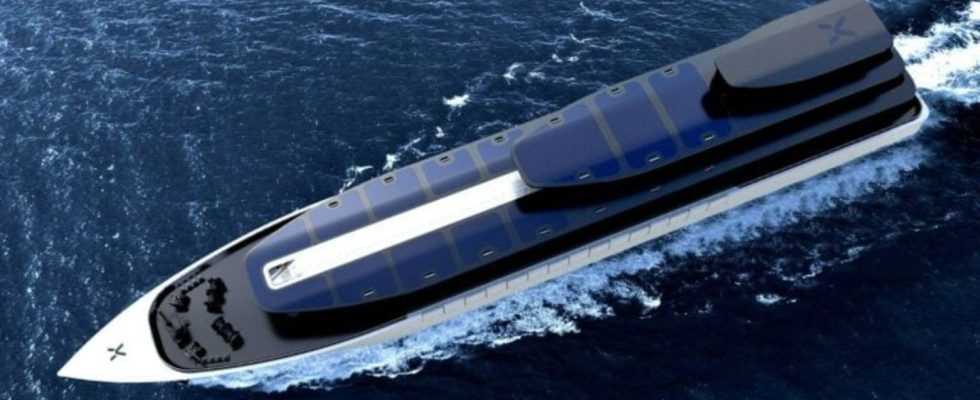PowerX
Across the world’s oceans with up to 2 gigawatt hours: how oil tankers are to become electricity ships
If the Japanese company PowerX has its way, ships will be able to transport electricity in the future.
© PowerX
The Japanese start-up PowerX has designed a ship that will transport electricity across the oceans. This should also replace huge undersea cables.
The end of fossil fuels would also mean the end of oil tankers. But one thing remains: the energy generated, in whatever form, has to find its way to the consumer. With a switch to renewable energy, it is likely that a significant portion of the electricity generated will be generated offshore. In order to transport it to land, you need cables. The Japanese startup PowerX came up with another solution.
First ship in two years
With the so-called battery tanker, the start-up recently presented the design for a 140 meter long ship, which according to the design should be able to transport 241 megawatt hours. For this, PowerX wants to fill the ship with 96 batteries to make it a kind of floating power bank. Construction is currently planned for 2025 and the first tests for the year after. PowerX gives the range as 300 kilometers to start with, which would still be uninteresting for global transport.
But that should only be the first serve. In the video that the company published, you can already see plans for much larger ships with capacities of up to 2 gigawatt hours, the range of which is to be steadily increased. This, coupled with better battery technology, paves the way for these ships to be operated economically, according to PowerX.
The company also explains why that would be better than cables: If large submarine cables have faults or are even defective, the costs for repairs quickly rise to dizzying heights. In addition, according to PowerX, the operation of the necessary connection stations is expensive.
Where there were power plants, charging stations can go
For the battery tanker, the company envisions shutting down power plants along the coast as connection points. This would make it possible to use the existing infrastructure and thus keep operating costs low.
In a calculation example, PowerX shows that electricity that would be shipped from environmentally friendly power plants from Hokkaido to Aomori in four tankers for a year would already be seven US cents cheaper than the current average price in the big city at current prices. It remains unclear whether the cost of building the ship is included in this calculation.




